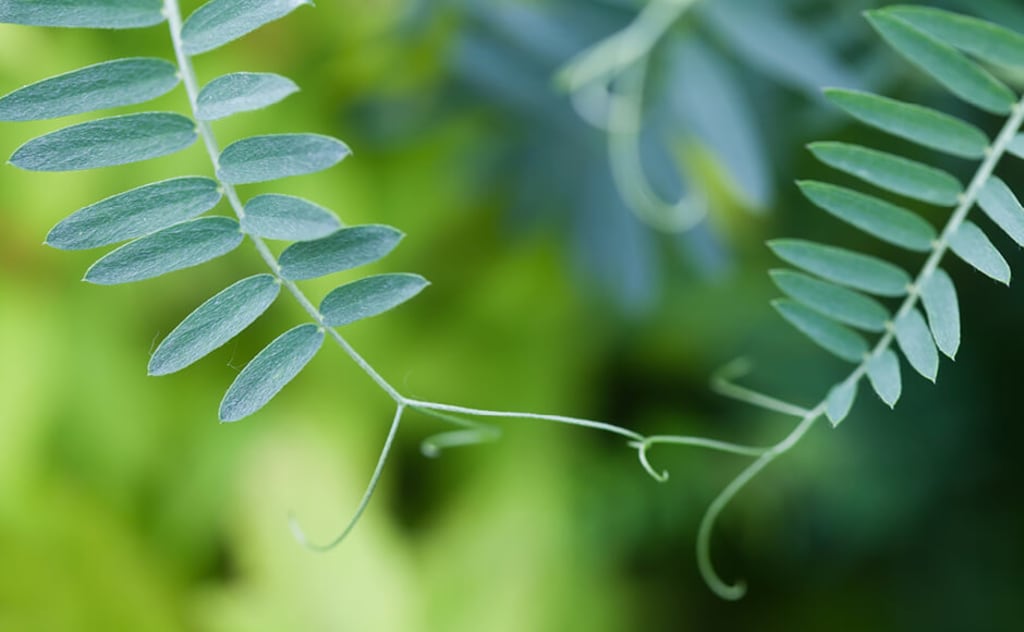Whispers of the Green World: Unveiling the Secret Language of Plants
From Electrical Signals to Ultrasonic Chatter, How Plants Communicate and Shape Our Future

Plants provide us with tranquility and serenity in the midst of a noisy and chaotic world. They remain still and quiet, not uttering a word or moving, yet little do we know that they have a hidden means of communication. Imagine this: at this very moment, your beloved Cactus is engaging in a form of texting with its plant companions, and these messages could hold the key to solving the global challenge of feeding humanity.
Plants exchange a wide range of messages with each other, encompassing various topics. They convey assistance, express needs, signal ripened fruits, and engage in conversations that extend beyond the towering trees to the small patches of moss that can surprisingly become quite chatty. Oh, and here's an intriguing fact: when you catch the scent of freshly cut grass, you are actually participating in a form of communication with a plant. Just like animals, plants possess a complex system of communication, and there is still much to uncover about these expressive beings.
Recent studies have revealed that plants emit sounds, although at frequencies too high for our ears to perceive. These sounds serve as a means of communication when plants experience stress. However, communication among plants extends far beyond stress signals. They have been engaged in dialogues with a variety of creatures, from predators to pollinators. So, why should we eavesdrop on plants? Because doing so could hold the answers to some of our planet's most pressing challenges.
As the global population continues to grow and climate change poses significant threats, finding ways to cultivate more food on limited land becomes imperative. Plant communication might just be the key to addressing this dilemma. Unlike humans, plants do not communicate through a nervous system or exchange signals back and forth. Rather, their communication resembles an intricate network of pipes and tubes, akin to plumbing. When a leaf detects a predator or senses a change in light or sound, it transmits a signal to the rest of the plant. Conversely, roots can perceive drought and signal the leaves to conserve water. These signals travel as electrical impulses through a complex system of tubular structures containing chemicals.
Now, here's the fascinating part: we can actually witness this electrical communication by placing electrodes on different parts of a plant. There are even instruments capable of translating these electrical charges into audible sounds. Therefore, if a plant sustains an injury, we can hear the electrical signals emanating from the wound. Moreover, when two plants come into contact, they can transmit these signals to one another. However, electrical signals are not the sole means of communication among plants.
Chemicals, particularly hormones, also play a significant role in their communication. One such hormone, called auxin, is produced at the top of a plant and travels downward, informing the plant of its upright orientation. This is crucial for a sprout attempting to break through the surface of the soil and reach sunlight. Communication through chemicals is not limited to growth and development; plants must swiftly react to defend themselves when in danger. Many plants release a hormone called jasmonic acid, which triggers the production of toxins, serving as a defense mechanism against predators like insects. It's their way of saying, "We must fight back!"
Interestingly, certain species can detect when neighboring plants are responding to threats. Mice can perceive these signals acoustically, while insects can smell the chemical messages being transmitted. Imagine walking through the woods and hearing a tree let out a cry of pain in the distance—that would certainly send shivers down your spine. However, it is yet uncertain whether these signals are intentional or simply byproducts of the plants' responses.
Speaking of sounds, recent research has unveiled that plants communicate through ultrasonic sounds when under stress. These sounds, beyond our audible range, can be detected by microphones sensitive to bat calls. Numerous plant species, including cacti and tomatoes, emit these ultrasonic sounds. Insects and mammals are even capable of perceiving these sounds without any specialized equipment. Scientists are harnessing this discovery to develop innovative methods for diagnosing, treating, and monitoring plants without causing harm.
While we may not be able to hear it, plants communicate with each other through chemical signals as well. When grass is cut, it releases a scent that serves as a distress signal for the plant. This same fragrance evokes feelings of the outdoors in us, making us feel good. Additionally, when a plant is consumed by a caterpillar, it emits this scent, attracting other insects that prey on the caterpillar. These scents, known as volatiles, travel both above and below ground, far and wide. Each plant species possesses a unique blend of volatiles.
In the plant world, volatile compounds play various roles. They can attract pollinators to flowers, guide them toward unpollinated blooms, and entice seed distributors toward fruits. Furthermore, these volatiles can deter predators, keeping them away from devouring plants. When the concentration of volatiles reaches a certain level, it intoxicates and repels predators, akin to a person wearing an excessive amount of perfume. Neighboring plants can detect these chemical signals and prepare themselves to defend against potential threats as well.
Plants possess a distinctive ability to recognize their relatives and others within their community. When plants detect their own offspring, they adjust their behavior to support their growth instead of competing for resources. Moreover, plants release volatiles underground, particularly in forests, as a signal to fungi. In turn, these fungi wrap around the plant's roots, extracting nutrients in exchange for the sugars produced through photosynthesis. This mutually beneficial relationship, known as a symbiotic or mutualistic relationship, thrives in forests where trees interact with various fungi, creating a mycorrhizal network. When the fungus encounters a tree's root, an intriguing exchange occurs—the swapping of small RNA fragments that can influence genetic responses in both organisms. If the fungus is a friend, it signals to the plant that it can be trusted, assisting in its growth. On the other hand, if the fungus is an enemy, the small RNA disables the plant's defensive genes, making it more susceptible to attack.
If you believed that trees solely compete with each other for resources, prepare to revise your thinking. Trees have the remarkable ability to share nutrients and water with one another when they are interconnected underground through the same fungus. Fungi act as microscopic bridges, linking the roots of different trees and enabling resource exchange. In fact, some of the oldest and largest trees in a forest serve as nurse trees, providing support and nourishment to younger, weaker trees. However, it's not only fungi that impact plants below ground; a plethora of microorganisms also contribute to their growth and defense against diseases. These tiny organisms attach themselves to plant roots, forming a slimy biofilm rich in beneficial bacteria. These bacteria aid in nutrient absorption and enhance the plant's natural defense mechanisms. The world of plant-microbe interactions remains a captivating area of study, holding immense potential to improve soil health and assist plants in thriving under even the harshest conditions. Such discoveries could revolutionize our ability to feed the ever-growing global population.
In conclusion, plants, despite their seemingly silent and motionless nature, possess a fascinating and intricate system of communication. They exchange messages through electrical signals, chemical volatiles, and even ultrasonic sounds, conveying vital information about their well-being, defense mechanisms, and interactions with other organisms. As we delve deeper into the study of plant communication, we uncover a world of interconnectedness, cooperation, and adaptation that holds immense potential for addressing pressing global challenges.
Understanding how plants communicate not only deepens our appreciation for the complexity of the natural world but also presents opportunities to revolutionize various fields. By deciphering the intricate language of plants, we can unlock innovative ways to improve agriculture, enhance soil health, protect plant species, and mitigate the effects of climate change. Furthermore, harnessing the wisdom of plant communication can guide us in sustainable food production, feeding the growing population, and navigating the changing environmental conditions.
As we continue to explore and unravel the secrets of plant communication, let us embrace the realization that these seemingly immobile and silent beings are engaged in a vibrant and dynamic conversation with the world around them. By listening to their whispers, we can unlock new possibilities for coexisting harmoniously with nature and ensuring a prosperous future for both humanity and the planet we call home.





Comments
Mela Mandigma is not accepting comments at the moment
Want to show your support? Send them a one-off tip.